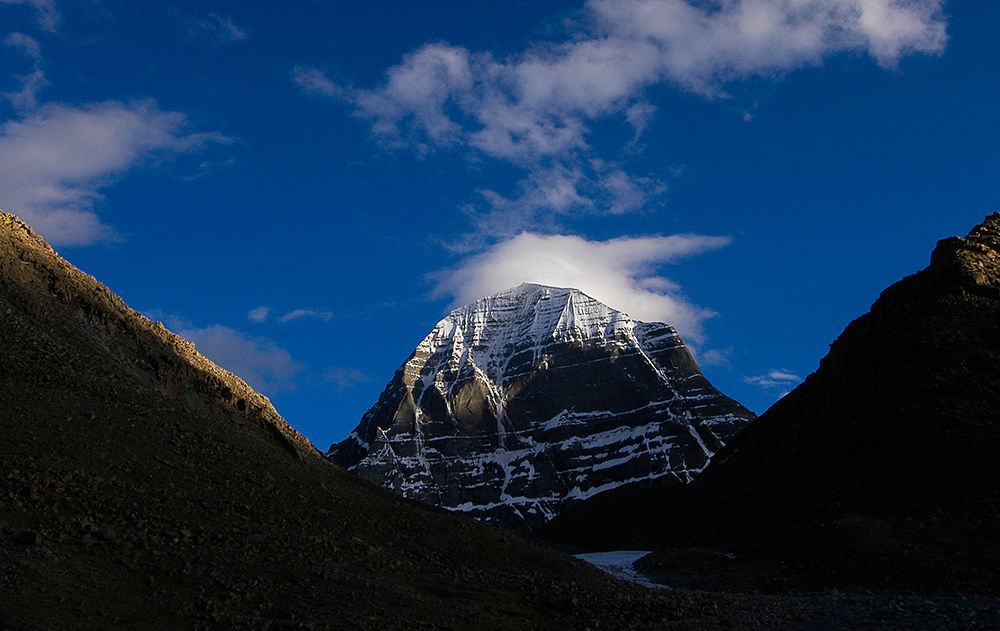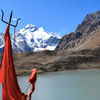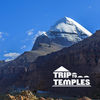Why is Mount Kailash a part of China?
Mount Kailash is one of the holiest places in the world for Hindus. It is the abode of Lord Shiva and it is said that visiting Mount Kailash is enough to wash away all the sins of even previous births.
A lot of the devotees have the question Where is Mount Kailash located?, the answer to Kailash Parvat Location is that Kailash Parvat is not exactly a part of China but Mt. Kailash and Mansarovar Lake is situated in Tibet, which is under the administrative rule of China.
The truth is that Mount of Kailash and Lake Mansarovar were never a part of India. In the past few centuries too, it was never a part of any major Indian empire. Kailash was part of Nepal a long time back and was ruled by a Nepali King. It was the Nepali king who gifted the Kailash area to a Tibetan King as dowry for his daughter’s marriage and then it became a part of Tibet.
After that, it has always been Tibetan territory and when India got independence in 1947, it was still the case.
India has never had a problem with Tibet. We also had strong cultural and trade ties with Tibet for centuries and many Tibetan scholars came to India to study in its famed universities. But when the Red Army of China annexed Tibet in the 1950s, India stood mutely and perhaps that was a diplomatic blunder of considerable proportions. However, thousands of Indian Hindu pilgrims go on the Kailash Mansarovar Yatra every year in peace and harmony.
Significance of Mount Kailash and Lake Mansarovar
The Hindu religion puts a lot of reverence on Lord Shiva, whom it considers to be the powerful, the strong and the willful. Hindus believe that Lord Shiva resides in Mount Kailash in a state of meditation. He lives there along with his divine consort, Parvati. Mount Kailash is considered to be the Shiva Temple in China.
It is considered that Lake Mansarovar first originated in the mind of Lord Brahma, after which it came into physical existence. The Manasarovar Lake is said to be a place where Lord Brahma and Lord Shiva swim as swans during ‘Brahma Muhurta’ or the period of time just before dawn. This is a time period which is considered extremely auspicious in Hindu tradition.
If a devotee can do a ‘parikrama’ of Mount Kailash and take a dip in the holy waters of Lake Mansarovar, it is believed that all the sins he committed in his past 100 lives will be absolved and he will be a new man.
Going on the Kailash Mansarovar Yatra
Most Hindus wish to go on the Kailash Manasarovar Yatra at least once in their lifetimes considering how highly revered it is. Devotees from all over the world visit this Shiva temple in China and seek the blessings of Lord Shiva. If you are interested in knowing the Kailash Mansarovar Yatra cost, then you will be happy to know that different price points are available to suit the demands of every pocket.
Here are a few things to know about it
- Kailash Mansarovar Yatra cost: The Yatra can be done via 3 to 4 routes including 2 routes that are conducted by the Ministry of External Affairs. The 2 routes conducted by the government will cost you between Rs 1,80,00 and Rs 2,50,00. There are 3 other routes available that are conducted by private tour operators, and they are either done via Lhasa, or via Kyirong border.
- Trekking distance: How much trekking one has to do while on a trip is something a lot of people are worried about. Well, the Lipulekh pass route will have you trek approximately 200 km and will cost around Rs 1,80,000. The Nathu La pass route has only 40 km trekking and the rest of the journey is done by train or bus. It costs around Rs 2,50,000. Both of these routes have a selection procedure that is done by lucky draw and there will be a stringent medical check-up as well. On the other hand, if you were to choose a private tour operator such as Trip To Temples, the trekking distance will be incomparable. The Nepal route is the one that is far more convenient for pilgrims. There is a helicopter route that starts from Lucknow and takes between 5 and 11 days. The overland route from Kathmandu will take around 14 days. If time and convenience is the top-post priority, then the Nepal route is the best choice. The Nepal route is cost effective too. There is no lucky draw and since lesser trekking is involved, the medical procedure is lenient.
- Best time to go: The best time to go on the Kailash Mansarovar Yatra is between the months of May and September.
- Age restrictions: This is not a pilgrimage for small children. If the Nepal route is considered, people between the ages of 10 and 70 only are allowed to go; while the GOI route only takes travelers between the ages of 18 and 70 years considering the hazardousness of the destination.
- Visa requirement: As Mount Kailash is under the administrative authority of China, one will need a passport and Visa to travel there. It is, however, a Group Staple / VISA. First, a permit gets issued and then VISA is applied for. Nepal does stamping on the passport when the yatra crosses through its borders to China.
Safety issues are a priority for the Kailash Mansarovar Yatra.
Since the government route is longer and involves extra days and physical effort, there is a strict medical procedure done before one is allowed to go. In fact, a pilgrim can be sent back from any point during the Kailash Yatra if a medical condition arises.
However, if you are going by the Nepal route, then the private tour operator follows the acclimatization procedure and plans the Manasarovar Yatra accordingly so that pilgrims get adjusted to the high altitudes. A good part of the Kailash Mansarovar Yatra gets done by helicopter and that further minimizes the medical risks.
In 2017, China refused the entry of 47 Indian pilgrims to the area who wanted to travel through the Nathu-la pass in Sikkim. The inclement weather and the bad road conditions were the reasons given for the denial of entry. As the trek is not an easy one, the safety and security of the pilgrims should be the first priority for government officials on both sides. Thousands of pilgrims brave the mountainous terrain every year to offer their respects to the heavenly abode of Lord Shiva and Mata Parvati and get blessings in return.
If you are planning to go on the Kailash Mansarovar Yatra, it is a good idea to follow all government guidelines for safety and security purposes. Good-quality tennis shoes, a backpack and a walking stick are must-have items to carry. This is truly the journey of a lifetime, and will build memories that one can cherish all life.












